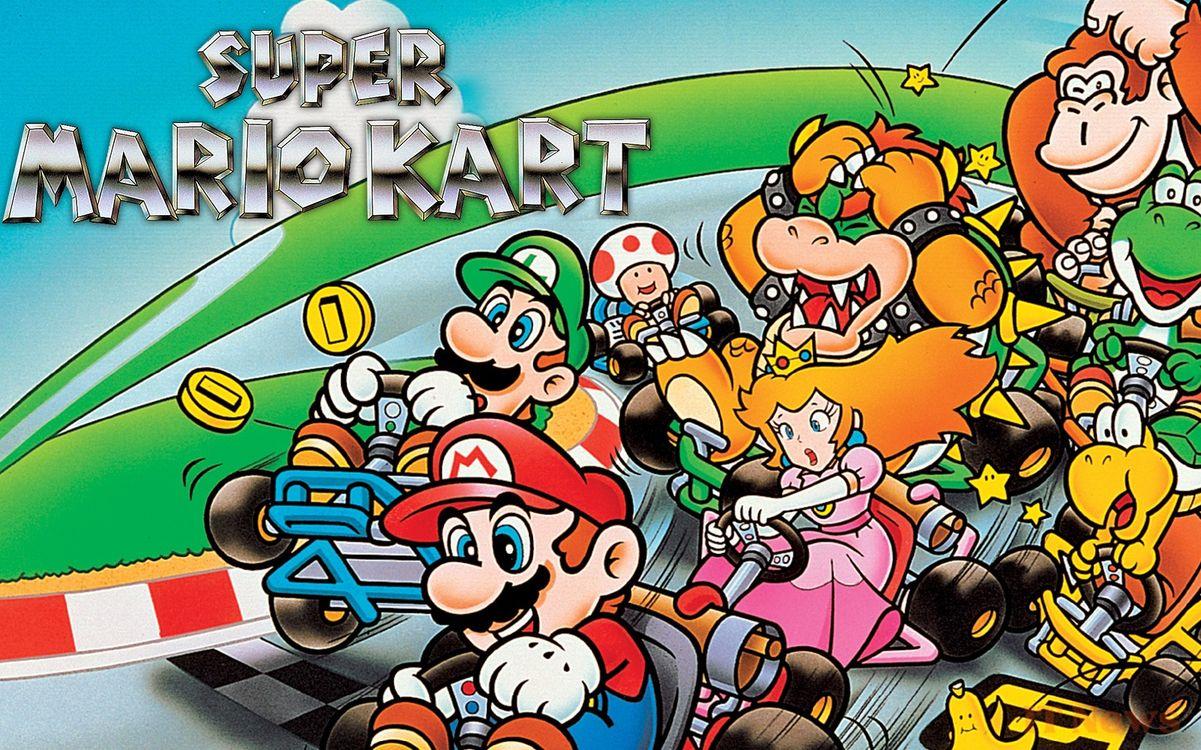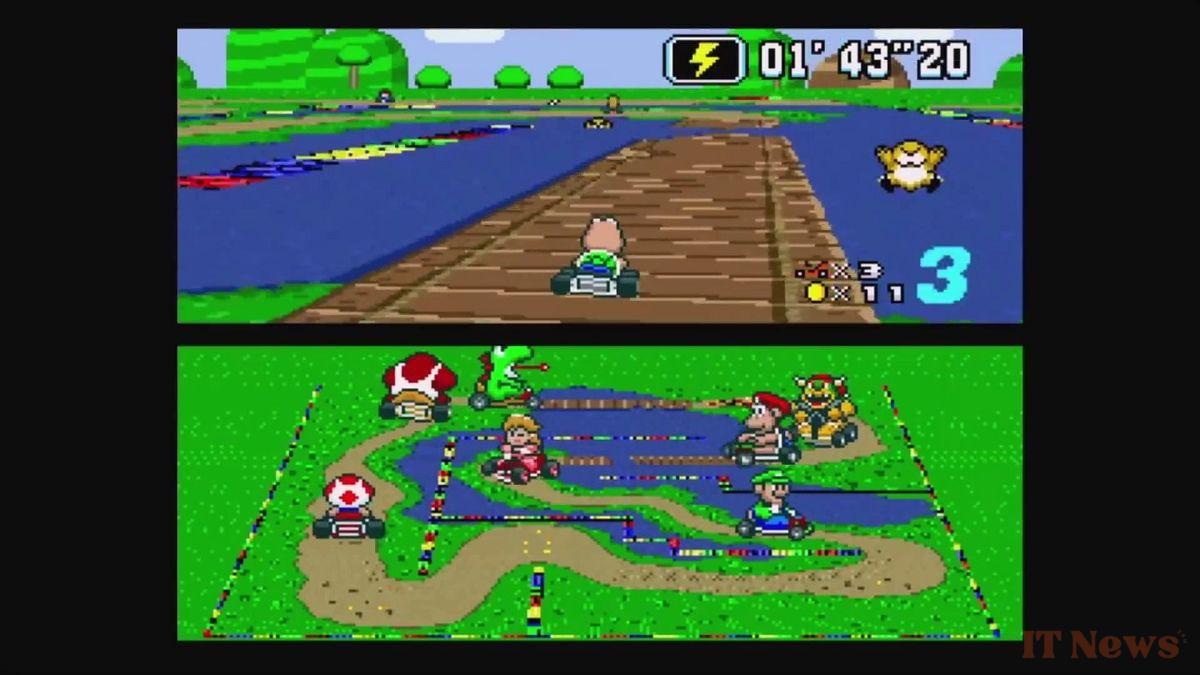This time it's for real! After several months of waiting, the highly anticipated Mario Kart World, the flagship of the Nintendo Switch 2, is finally here. Boasting an open world rich in possibilities, this new installment is innovative in many ways, and many people haven't been able to put it down since the console's launch two days ago. At Phonandroid, we decided to take a (short) break to look back at the genesis of this iconic saga, and as you'll see, the idea didn't come from a snap of the fingers. 3, 2, 1, Go!
An absolute must-have in the video game landscape, Mario Kart is one of Nintendo's most popular franchises. Originally released on the Super Nintendo over thirty years ago, it was born from the imagination of two men, Tadashi Sugiyama and Hideki Konno, the latter being passionate about the Tour de France. To understand where this ultra-friendly series comes from, we invite you to climb aboard our DeLorean and go back to the pixel era of F-Zero.
Zero points for the F-Zero sequel
In the fall of 1990, Nintendo teams were busy completing preparations for the Japanese launch of the Super Nintendo. Scheduled for November 21, it was expected with Super Mario World, the new adventure of the mustachioed plumber, and F-Zero, a futuristic racing game showing off the incredible visual capabilities of the machine. Despite the quality of the latter, producer Shigeru Miyamoto regretted that the developers had not been able to add a two-player split-screen mode. So, rather than opting for a sequel that integrates this option, Mario's father invites some members of the staff to work on a game that can address this issue. Initial tests are carried out, but the verdict is clear: the developers do not yet master the console and the display of two screens directly impacts the animation speed. So they will have to be cunning...
From this experience, the developers understand that the game will have to focus on something other than speed. Advocating a philosophy contrary to F-Zero, which focuses on sensations, a first prototype is made with F1 cars, but the rendering does not convince the team and the spirit of this discipline is considered too serious by several members. Another idea will then emerge. Tadashi Sugiyama recalls: "At the beginning of development, we did a lot of research. I read an introductory guide to kart racing and watched a video about drifting competitions." Kart racing!? That's the solution! This sport is ideal for showcasing vehicles that compete in closed spaces, with technical driving and without any question of hair-raising speed. Realizing that the idea was the best, the staff managed to convince the producer, Shigeru Miyamoto, to spend several days at an amusement park near the seaside town of Shima. They drove around the track to understand how a kart drove and its reactions. Delighted with this experience, the developers returned to the office with their heads full of ideas. Besides the absence of the odometer (which could give a false impression of speed), they are starting to work, alongside the Grand Prix mode races, on a Battle mode where drivers compete using karts equipped with machine guns firing projectiles. There are also oil barrels that can slow down competitors. But the conclusion is clear: the drivers are ugly, the arenas are empty and if the sensations, inherited from the karting experience, are not bad, they ultimately lead to nothing. It is ultimately a detail that will change everything...
A banana that changes everything
Hideki Konno recalls: "One day, someone suggested replacing the oil barrels with banana peels to add a bit of color. We then thought that bananas would fit Donkey Kong better, and one thing led to another, and we ended up bringing back other Mario-related characters..." By opting for the plumber's lore, things will then speed up, the game becomes more colorful, more fun, the objects to use are inspired by Mario's adventures (bombs, shells, etc.). After focusing on the Battle mode with its closed arenas, the team turns its attention to the races. Once disturbed by the idea of using items at the heart of races, the designers understood that they were in fact the very essence of their new game.
For Hideki Konno, who was responsible for the game's visual envelope (and who would become a long-standing producer of the series), it was almost a revenge. Passionate about cycling and the Tour de France, he proposed a game of this type to his superiors, but this proposal was rejected. With Super Mario Kart, thanks to perfect balancing (the most powerful items are given to those at the end of the race), he was able to rediscover the sensations that a cycling race can provide. "Mario Kart races resemble peloton races," he explains. "Why? Because a peloton race always has surprises in store. The finale is very exciting because anything can happen in the final meters. Anyone who has ever played Mario Kart can confirm that a brutal reversal of fortune is never excluded during a game.»
As you will have understood, the Mario Kart series was born from a set of circumstances that meant that speed, ordinary characters, and the idea of establishing a principle reminiscent of the pelotons in cycling races pushed the developers to find ingenious solutions. High-speed vehicles, like F1, were replaced by karts. The speedometer was removed to prevent any bad impression of slowness (the speed of a kart fluctuates between 80 and 90 km/h) and the very generic universe was replaced by the lore of Mario. The objects, meanwhile, were designed to make the races user-friendly, while giving a real chance to the drivers who were lagging behind. Super Mario Kart on Super Nintendo kicked off an extraordinary series of user-friendliness. The intelligence of the team was to not make the driving of the karts too realistic, while adopting a very effective drift system with the jump (by pressing L or R, the kart makes a small jump, which is ideal for better negotiating the turns). All this together made Mario Kart the saga that we know today and Mario Kart World is fully in line with this notion of pleasure. While modernizing the formula with its new actions and its open world, it promises thousands of hours of gameplay.
Also read – If Elden Ring exists, it’s thanks to the fall of the USSR. We tell you the incredible story of the beginnings of From Software
The funniest thing about the story is that Hideki Konno won his case. Although he didn’t get permission for his cycling game (Miyamoto was afraid that repeatedly pressing buttons to simulate pedaling would quickly bore players), he still managed to introduce two-wheelers with the Wii episode. And today, motorcycles are still around. Maybe one day, bicycles will be part of it!







0 Comments